Hanok Guesthouse Dongchonchae / 한옥 게스트하우스 동촌재
3.0Km 2025-08-12
21-10, Jahamun-ro 11-gil, Jongno-gu, Seoul
Built in 1939, Dongchonchae was designated as Seoul Well Hanok by the Seoul Metropolitan City in 2016. In 2020, this hanok (traditional Korean house) received the Certificate of KOREA QUALITY from the Korea Tourism Organization in the Heritage Hanok field in recognition of its historicity and quality of services. Dongchonjae is located in the western side of Gyeongbokgung Palace, at Seochon. When one passes through its main gate, one sees the yard, with anchae (women's quarters), sarangchae (men's quarters), and byeolchae (detached quarters) surrounding the plot. Anchae has four rooms, daecheong (wood-floored main hall), a kitchen, and a restroom. One of the rooms is used for tea ceremonies as well. Outside of the sarangchae and byeolchae, which are the living spaces for the owners, visitors have free access to the numaru (raised open floor) and the yard. The anchae’s rooms “Bom” and “Yeoreum” can accommodate 2 to 3 adults each, while the rooms “Gaeul” (Tea Room) and “Gyeoul” are optimal for two. The building is rented out as a whole, so no more than one group may stay in the building at any given time. Standard occupancy is four persons, and eight is the maximum number. There are two restrooms, one within the anchae building, one out in the backyard.
Cooking is not allowed in the kitchen, but guests are free to bring in outside food. Experience programs on offer include nighttime exploration of Seoul City Wall, tea ceremony, folk songs, and rice cake making. Additional payment is only required for rice cake making. Guests may choose between two types of complimentary breakfast: Korean, which comes with rice, soup, and three side dishes; and Western, which comes with bread, salad, and coffee. There are a 100-in screen and mini projector for film watching in the yard or daecheong. Towels, toiletries, hair dryer, bottled water, traditional tea, and capsule coffee are included. The kitchen is equipped with kitchen utensils, a microwave, and a coffee pot, enough for instant foods. Guests also have access to refrigerator and washing machine
Imperial Palace Boutique Hotel (임피리얼 팰리스 부티크 호텔)
3.0Km 2021-03-09
221, Itaewon-ro, Yongsan-gu, Seoul
Situated in the heart of Itaewon, an international shopping district in Seoul, Imperial Palace Boutique Hotel has the perfect location for business and leisure travelers. The guestrooms are decorated with pop-art paintings to give a more comfortable and trendy ambience. The hotel also provides a conference room, gym, dining options, and more.
Parc Samcheong (삼청공원)
3.0Km 2020-06-09
134-3, Bukchon-ro, Jongno-gu, Seoul
+82-2-2148-4150
Situé à la périphérie du Mont Bugak, ce parc fut le premier en Corée à être officiellement désigné par cette appellation. Le nom de Samcheong (« Les Trois Bleus ») fait référence aux trois idéaux dans le Taoïsme que les hommes peuvent atteindre. Entouré de cerisiers plantés il y a fort longtemps, le parc fourmille de touristes tous les mois d’avril lorsqu’ils sont en pleine floraison. Le parc propose de nombreuses installations : des courts de tennis et de badminton, une aire de jeux, un snack, et une aire de repos polyvalente.
La principale piste de randonnée à travers le Parc Samcheong connecte ce dernier à celle des Murs de la Forteresse de Séoul du Mont Bugak, source d’eau minérale à Seongbuk-dong, et Waryong. Pendant la randonnée, vous tomberez sur Malbawi, un excellent endroit choisi par la Municipalité de Séoul d’où vous pourrez avoir une vue d’ensemble sur la ville. Le Programme de Visite du Site Historique Malbawi, géré par l’Office de Jongno-go, fournit aux enfants et aux adultes l’opportunité d’apprendre sur l’écologie naturelle du Parc Samcheong et sur l’histoire des Murs de la Forteresse de Séoul grâce à des guides désignés. A travers les routes développées dans Samcheong-dong, vous pourrez facilement jusqu’à Seongbuk-dong. En ce moment, le Tunnel Samcheong près du parc relie les deux localités.
bon PALETE(봉파레트)
3.0Km 2020-12-24
57-1 Seongbuk-ro Seongbuk-gu Seoul
+82-2-766-0827
You can enjoy delicious meals at a hanok restaurant. This Western dishes restaurant is located in Seongbuk-gu, Seoul. The representative menu is seafood pasta.
Cheongwadae Sarangchae (청와대 사랑채)
3.0Km 2023-05-30
45, Hyoja-ro 13-gil, Jongno-gu, Seoul-si
+82-2-723-0300
Cheongwadae Sarangchae désigne un espace pour en apprendre plus sur la culture coréenne et l'Histoire des présidents en Corée. Il est possible d'en apprendre plus sur les charmes du tourisme en Corée et sur les histoires secrètes de Cheongwadae.
Hyehwa1938 / 혜화1938
3.0Km 2025-08-12
7, Sungkyunkwan-ro 16-gil, Jongno-gu, Seoul
+82-10-7107-1752
Located in (no suggestions)-dong of Seoul, Hyehwa 1938 is a lodging facility which is based on the remodeling of an 80-year- old traditional Korean house. A traditional Korean house expert initially wanted to use it as an office but later decided to turn it into a guest house due to its large size. As a result, the unique beauty of traditional Korean house was revived while improving practicality. The Woojeong room and Sarang room are now resized to accommodate max 8 persons which used to be only max 4 in the past. Despite the remodeling, the aura and atmosphere of the traditional Korean house is well preserved. Inside the room, you can see that the chandelier of the rich house in the '30s are accompanied by modern furniture and electronics which maintain unique harmony. Open the windows to see sansuyu and maehwa along with other various seasonal trees with beautiful colors and also the space such as edges and sewers are well arranged to avoid any discomforts with your eyesight. The heart of architecture offers only two rooms for guests, and you are all welcome to enjoy the true beauty of Korea.
Darakjeong (다락정)
3.0Km 2021-03-26
131-1, Samcheong-ro, Jongno-gu, Seoul
+82-2-725-1697
Darakjeong has been popular for a long time because of the simple taste of its traditional Mandu (Korean stuffed dumpling). Since its opening in 1991, tasty soup and scrumptious Mandu have been served. A fist-sized Mandu is fully packed with seasoned meat, bean-curd, and various vegetables. Its thick dough makes it chewy and delightful. For one person, “Manduguk”(boiled dumpling soup) is a good choice. The delicious and nourishing taste of Mandu goes well with the sweet, spicy, and fresh taste of the soup. Manduguk is served in a brass bowl which keeps the food warm while eating. For a large-size group, “Mandujeongol” cooked with various vegetables in a casserole is recommended. There are two types of Mandujeongol that have different tastes. The main characteristic of “Kimchi Mandujeongol” is its spicy flavor, which reminds people of the refreshing taste of Kimchi soup, and “Tojang Mandujeongol” expounds on the savory taste of bean-paste soup. Tojang means folk soybean-paste. “Nokdujeon”(a Korean pan-fried dish with green mung bean) is another famous dish at Darakjeong, which is pan-fried with a very light seasoning to emphasize the original taste of Nokdu (green mung bean). Salted oysters with hot pepper are served with Nokdujeon instead of soy sauce, which is a perfect match.
Nunnamujip (눈나무집)
3.0Km 2020-06-16
136-1, Samcheong-ro, Jongno-gu, Seoul
+82-2-739-6742
Nunnamujip is famous for a North Korean dish called, “Kimchi mari guksu”, which is a noodle dish in cold kimchi soup containing toasted laver, a boiled egg, and sesame. The soup is refreshingly cold and a little spicy. For “Kimchi mari bap”, a bowl of rice is put into cold kimchi soup instead of noodles. The taste is very unique. In addition to Kimchimari, “Tteokgalbi” is a popular dish on the menu as well.
The main restaurant is located in the basement, which has only limited seating capacity with a few tables. As a result, many people usually wait in line for lunch or dinner. A second franchise has opened in a three-story building across the street. To enjoy a quaint atmosphere, the first establishment is better, but the new one’s interior design is much more modern and fancier, giving it a fresh altering look.
Hangeureut (한그릇)
3.0Km 2021-03-18
136, Samcheong-ro, Jongno-gu, Seoul
+82-2-720-5613
A store that also serves delicious meat noodles. The best menu at this restaurant is rice soup. This is a Korean cuisine located in Jongno, Seoul.
Rue de Cheongwadae (청와대 앞길)
3.0Km 2020-04-23
Gungjeong-dong, Jongno-gu, Séoul
+82-2-120
La rue de Cheongwadae a été créée avec l’instauration du gouvernement civil, et s’étend depuis le carrefour de Hyoja à Hyoja-dong jusqu’au carrefour de Palpan à Palpan-dong. En suivant la rue Hyoja depuis la station de métro Gyeongbokgung, vous trouverez le Sarangbang de Hyoja, une fontaine, un bosquet d’hibiscus, le hall Yeonmugwan, le pavillon Daegogak et le hall Yeongbingwan.
Le Sarangbang de Hyoja est un petit bâtiment composé d’un rez-de-chaussée abritant une exposition relatant les 600 ans d’histoire de Séoul, et d’un étage où sont exposés des cadeaux d’hôtes étrangers prestigieux. Les visiteurs peuvent se reposer dans le jardin de derrière. Au Daegogak se trouve un tambour offert au président Kim Yeong-san en souvenir de l’ancien tambour Sinmungo. Le hall Yeonmugwan est l’endroit où le personnel des services de sécurité s’entraîne aux arts martiaux. On y trouve également une citadelle en pierre naturelle, ainsi qu’un espace de repos. Derrière le bosquet d’hibiscus siègent l’ambassade du Vatican et le pavillon Chilgung.
Bordée d’arbres touffus et de parterres fleuris, la rue de Cheonwadae est l’endroit rêvé pour une belle promenade. La résidence présidentelle Cheonwadae (qui signifie « Maison Bleue ») se trouve juste en face de la porte Sinmumun du côté Nord du palais Gyeongbokgung, et la rue se termine sur la porte Chunchumun, où se trouve le centre de presse de Cheonwadae. Un peu plus loin, la rue Samchongdong-gil s’étend depuis la porte Chunchumun jusqu’à la porte Geonchunmun (porte principale du palais Gyeongbokgung). De nombreuses galeries de peinture y sont installées (galerie Gukje, galerie Growrich, galerie Hyundai, etc) , ce qui en fait un lieu de prédilection pour tous les amateurs d’art.
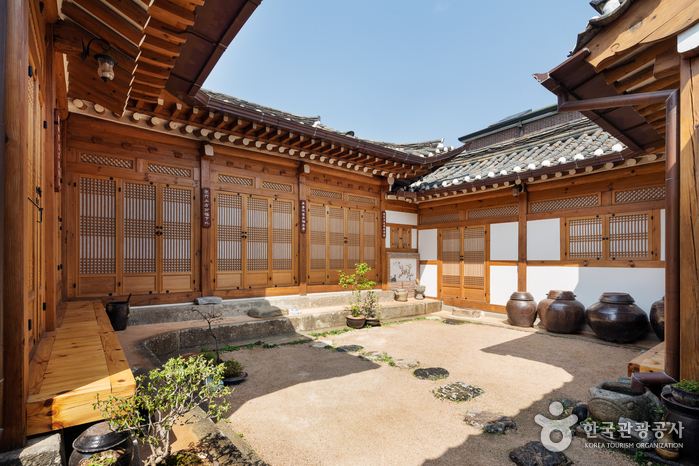
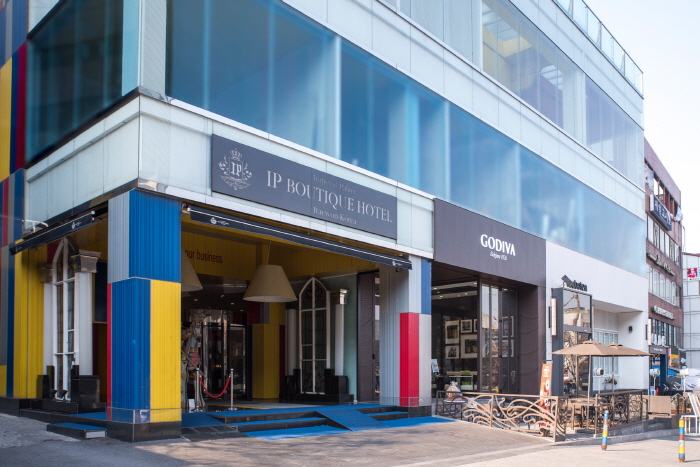
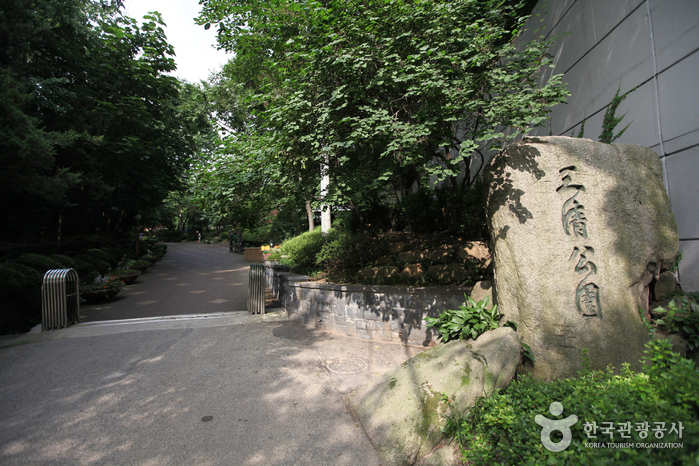
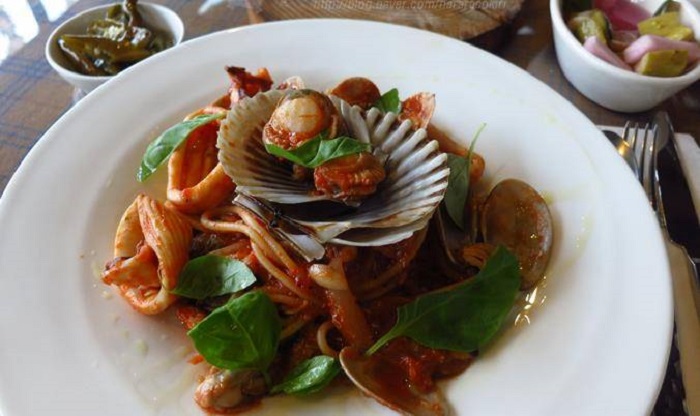
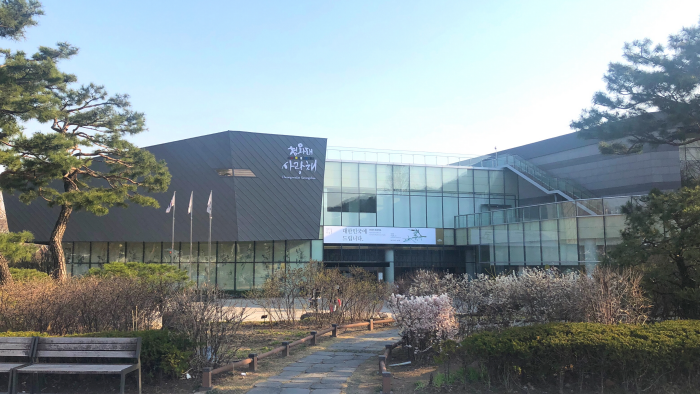
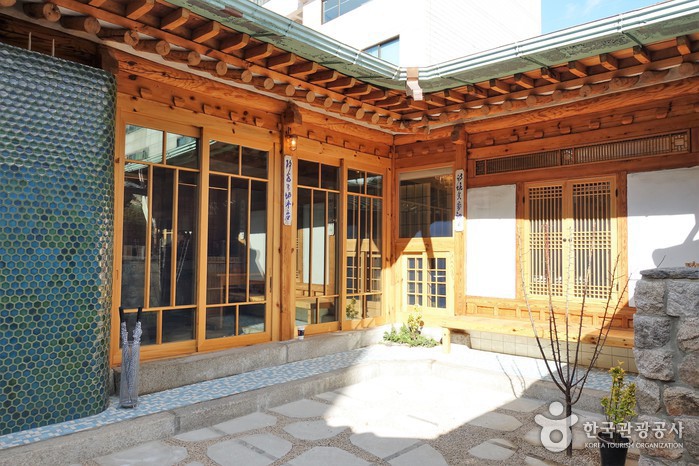
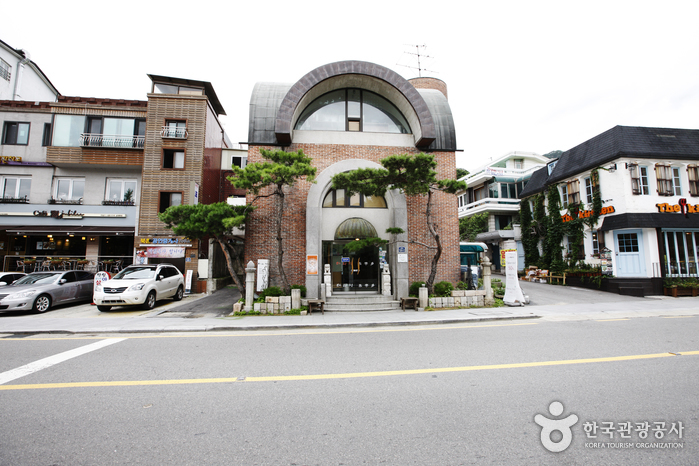
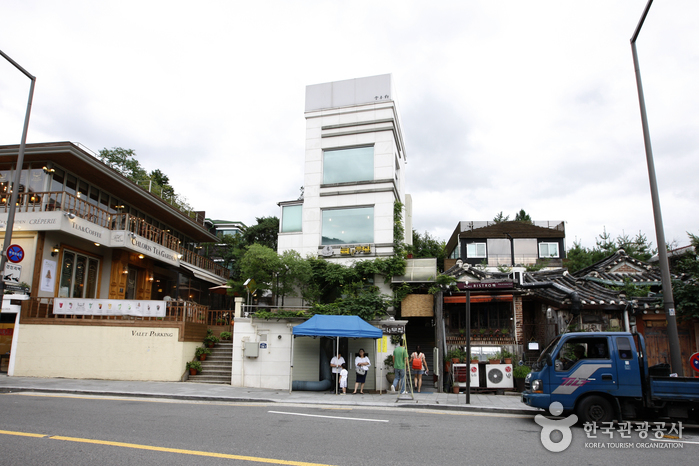
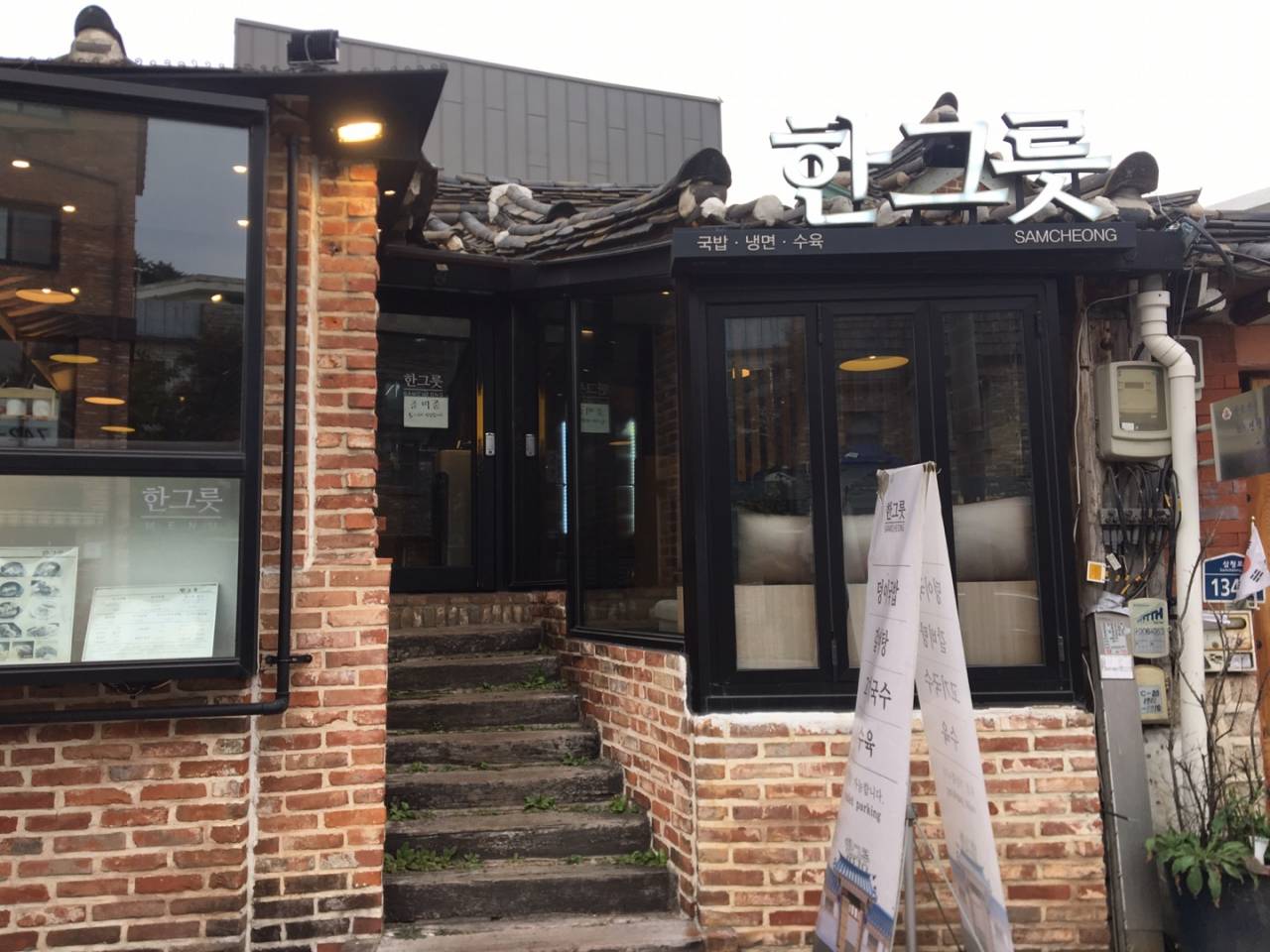
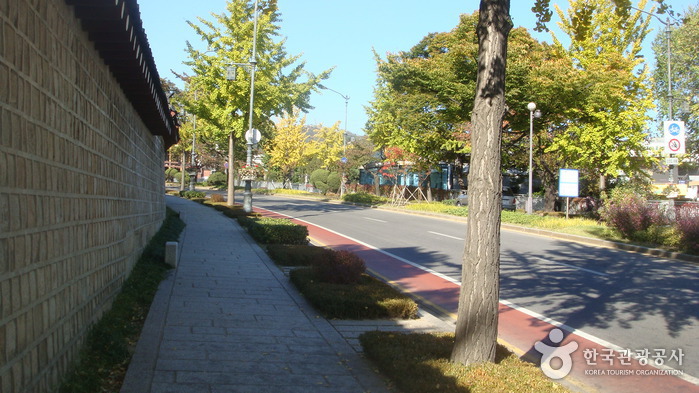
 Français
Français
 한국어
한국어 English
English 日本語
日本語 中文(简体)
中文(简体) Deutsch
Deutsch Español
Español Русский
Русский